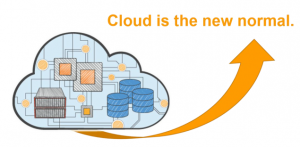
The Well-Architected Framework identifies a set of general design principles to facilitate good design in the cloud:
• Stop guessing your capacity needs: Eliminate guessing your infrastructure capacity needs. When you make a capacity decision before you deploy a system, you might end up sitting on expensive idle resources or dealing with the performance implications of limited capacity. With cloud computing, these problems can go away. You can use as much or as little capacity as you need, and scale up and down automatically.
• Test systems at production scale: In a traditional, non-cloud environment, it is usually cost-prohibitive to create a duplicate environment solely for testing. Consequently, most test environments are not tested at live levels of production demand. In the cloud, you can create a duplicate environment on demand, complete your testing, and then decommission the resources. Because you only pay for the test environment when it is running, you can simulate your live environment for a fraction of the cost of testing on premises.
• Lower the risk of architecture change: Because you can automate the creation of test environments that emulate your production configurations, you can carry out testing easily. You can also remove the test serialization that occurs in on-premises environments where teams have to queue to use the test resources.
• Automate to make architectural experimentation easier: Automation allows you to create and replicates your systems at low cost (no manual effort). You can track changes to your automation, audit the impact, and revert to previous parameters when necessary.
• Allow for evolutionary architectures: In a traditional environment, architectural decisions are often implemented as a static, one-time event, with a few major versions of a system during its lifetime. As a business and its context continue to change, these initial decisions may hinder the system’s ability to deliver changing business requirements. In the cloud, the capability to automate and test on demand lowers the risk of impact from design changes. This allows systems to evolve over time so that businesses can take advantage of new innovations as a standard practice.
